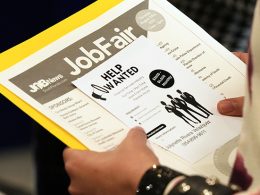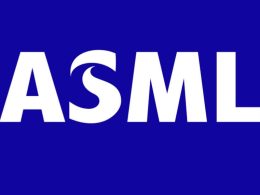by SIACharts.com
Large-cap equities continued to perform well this week, with the S&P 500 gaining 1.92% and the NASDAQ up 2.57%, pushing year-to-date gains to 9.95% and 12.44% respectively. Strength remains concentrated in mega-cap names, as reflected by the S&P 100’s outperformance over broader indices. However, we are starting to see signs of defensiveness within leadership groups, particularly in software stocks, which are beginning to underperform on a relative basis. This could be an early indication of consolidation or fatigue in high-growth areas.
At the same time, interest rates are falling sharply across the curve, with the 5-year CBOE rate down nearly 14% year-to-date and the 10-year off over 7%. This trend has historically been supportive for equities, especially growth stocks, but the market’s interpretation now appears more nuanced. While lower yields suggest increased confidence in easing monetary policy, they may also reflect softening economic expectations, raising the question of whether equities can maintain momentum without a broadening of leadership.
While small-cap indices like the Russell 2000 surged this week, gaining 4.81%, they remain well behind large caps on a year-to-date basis. That said, small caps have historically performed well in falling rate environments, which could position them for a stronger recovery if the trend in yields persists. For now, with signs of relative weakness in high-growth segments like software and continued strength in rate-sensitive large-cap names, a more selective approach within the large-cap space may be warranted, with attention to emerging signs of defensiveness.
Software Sector Weakens: A First Shot Across the Bow?
Perhaps one of the first warning signs for equity markets is the growing deterioration in the SIA Computer Software Sector Equal Weight Index (EWI550) on a relative basis. While large-cap names like Palantir, Oracle, and Microsoft continue to exhibit strong technical attributes, we are seeing increasing evidence that the broader group—the “soldiers” behind the “generals”—is starting to retreat. This divergence is notable and may represent the early stages of a broader rotation or a pullback within one of the market’s most important growth segments.
In the attached Point & Figure chart, there are several notable developments. Most importantly, the SIA Computer Software Sector (EWI550) has cycled out of the SIA Favored Zone if the Sector Report, as indicated by the clipped sector report and the color-coded overlay on the chart. This breakdown mirrors what occurred in the spring when early weakness in software foreshadowed a wider market correction (see yellow arrows). Technically, this has also triggered a double bottom Point & Figure sell signal, the first since the V-shaped recovery began, originating from the 177,368 level.
Looking ahead, the index now faces resistance at its prior support level at 177,368 and again at the top-line resistance of 186,416. On the downside, initial support lies 8% below current levels at 158,979, with a secondary support zone another 10% lower at 142,497. Taken together, this suggests potential downside risk of up to 18%. Given the sector’s significance to overall market leadership, we are raising a risk flag on software and suggest closely monitoring developments as a possible early indicator of broader market shifts.
Fewer Leaders, Mounting Losses: Software Sector Under Pressure
A narrowing group of software names continues to hold up the sector, but that group is becoming increasingly limited. Palantir remains the strongest relative strength performer in the space with a 143.73% year-to-date return and continued price momentum. Oracle and Microsoft also remain among the higher-ranked names, though both experienced some near-term weakness. These few large-cap names continue to show stability, but outside of them, relative strength is increasingly under pressure across the broader software group.
The data shows a growing number of software companies slipping in relative strength rankings within the S&P 500. Names like CrowdStrike, Autodesk, ADP, and Tyler Technologies have all seen their relative standing decline in recent weeks. Gartner has fallen to the bottom of the rankings, now down nearly 50% year-to-date. Fair Isaac and The Trade Desk are down 32.93% and 53.75% respectively. A number of these names had been solid performers earlier in the year but are now seeing multi-month losses build as relative strength trends continue to weaken.
Several companies that were previously highlighted in daily reports have also come under pressure. ServiceNow has dropped 312 spots in the rankings and is down 18.61% year-to-date. Fortinet has fallen significantly in both price and relative strength, with a 17.86% decline over the past week and a 24.48% loss over the last three months. Datadog is now negative on the year following a 6.02% weekly decline. The Trade Desk has seen one of the sharpest drawdowns in the group, with a 39.32% loss in just the last week. These shifts reflect a broad deterioration in participation within the software space and highlight the declining number of leadership names supporting the sector.
Disclaimer: SIACharts Inc. specifically represents that it does not give investment advice or advocate the purchase or sale of any security or investment whatsoever. This information has been prepared without regard to any particular investors investment objectives, financial situation, and needs. None of the information contained in this document constitutes an offer to sell or the solicitation of an offer to buy any security or other investment or an offer to provide investment services of any kind. As such, advisors and their clients should not act on any recommendation (express or implied) or information in this report without obtaining specific advice in relation to their accounts and should not rely on information herein as the primary basis for their investment decisions. Information contained herein is based on data obtained from recognized statistical services, issuer reports or communications, or other sources, believed to be reliable. SIACharts Inc. nor its third party content providers make any representations or warranties or take any responsibility as to the accuracy or completeness of any recommendation or information contained herein and shall not be liable for any errors, inaccuracies or delays in content, or for any actions taken in reliance thereon. Any statements nonfactual in nature constitute only current opinions, which are subject to change without notice.












